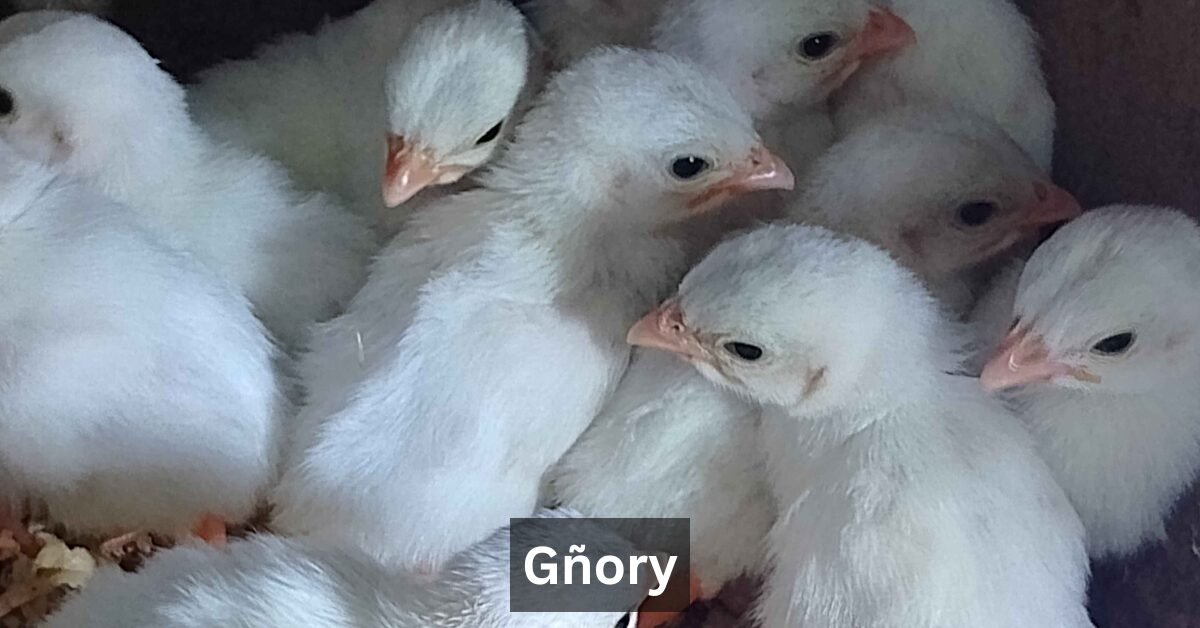Iganiny is a cultural tradition with historical roots, often associated with folklore, games, and rituals that bring communities together.Whether viewed as a historical practice, a symbolic game, or a form of storytelling, Iganiny carries immense significance in preserving heritage and fostering intergenerational connections. Many societies across different regions have upheld Iganiny as a cherished custom, passing it down through rituals, celebrations, and shared knowledge. Despite its deep-rooted past, Iganiny continues to evolve, finding new expressions in modern society while still maintaining its core essence. In this article, we will explore the origins, historical evolution, cultural relevance, and contemporary significance of Iganiny, shedding light on why it remains a treasured tradition to this day.
What is Iganiny?
Iganiny is a term that encapsulates a blend of cultural heritage, traditional customs, and symbolic practices, often preserved through oral storytelling, folk festivals, and indigenous ceremonies. The precise definition of Iganiny varies across regions, with some considering it a ritualistic event, while others see it as a game rooted in strategy and skill. At its core, Iganiny serves as a bridge between generations, allowing communities to preserve their ethnic folklore and reinforce shared values. The concept of Iganiny is often tied to social cohesion, as it fosters participation in local heritage events, reinforcing a sense of unity and belonging. Beyond its symbolic significance, Iganiny also plays an educational role, helping younger generations understand their ancestry and appreciate the traditions that have shaped their cultural identity.
Why is Iganiny Important?
The importance of Iganiny extends beyond entertainment or tradition—it embodies a living history that connects the past to the present. One of the most significant aspects of Iganiny is its role in preserving cultural narratives and ensuring that age-old traditions are not lost in the face of modernization. As societies evolve, many indigenous customs and rituals fade into obscurity, but Iganiny has persisted because of its adaptability and continued relevance. It is celebrated in folk festivals, community gatherings, and educational settings, demonstrating its enduring impact on cultural preservation. Additionally, Iganiny fosters social bonding by creating an inclusive space where people of all ages can participate. Whether through storytelling, competitive gameplay, or celebratory dances, Iganiny brings people together, reinforcing the importance of collective identity and shared experiences.
The Origins and History of Iganiny
The roots of Iganiny can be traced back to ancient traditions, particularly in Eastern European communities and indigenous societies that emphasized storytelling, ritualistic games, and community bonding. Historically, Iganiny was more than just a pastime—it served as a means of passing down knowledge, moral lessons, and historical records. The earliest forms of Iganiny were often played during harvest festivals or religious ceremonies, where they symbolized gratitude, resilience, and the cyclical nature of life. Over time, as societies developed, Iganiny evolved into a structured activity, with defined rules and variations based on regional influences. In some cultures, it became an essential aspect of rural community gatherings, fostering cooperation and strengthening social ties. Throughout history, Iganiny has been documented in folklore, ethnographic studies, and even in artistic expressions such as paintings and literature, underscoring its deep connection to cultural heritage.
Evolution of Iganiny Over the Centuries
The evolution of Iganiny over the centuries showcases its adaptability and resilience as a tradition. Initially practiced in small rural communities, Iganiny gradually spread across different regions, taking on new forms while retaining its core essence. In some areas, it remained a symbolic ritual passed down through generations, while in others, it transformed into a competitive game with strategic elements. The introduction of written records and cultural preservation efforts by historians further helped in maintaining the legacy of Iganiny, ensuring that future generations would understand its historical significance. During different historical periods, Iganiny adapted to changing social structures, economic conditions, and technological advancements. Despite these shifts, its role in strengthening community bonds and preserving cultural identity has remained intact, making it a timeless tradition that continues to thrive in contemporary settings.
Cultural and Traditional Significance of Iganiny
Iganiny’s cultural and traditional significance lies in its role as a vessel for folklore, mythology, and symbolic storytelling. Many legends and myths revolve around Iganiny, depicting it as an activity that fosters wisdom, courage, and camaraderie. It has been featured in numerous folk tales, often illustrating themes of perseverance, unity, and strategic thinking. The tradition of Iganiny also serves as a means of intergenerational storytelling, with elders passing down knowledge through engaging narratives that keep cultural heritage alive. This act of storytelling is not only educational but also reinforces the emotional connections between different age groups, creating a shared sense of identity. Furthermore, Iganiny is often celebrated through rituals and ceremonies, with elaborate festivities that include traditional music, dance, and symbolic gestures that highlight its significance. These celebrations provide an opportunity for communities to come together, honor their ancestors, and partake in a collective cultural experience.
Iganiny as a Traditional Game
Beyond its cultural and symbolic importance, Iganiny is also recognized as a traditional game that combines skill, strategy, and social interaction. The game typically involves participants engaging in challenges that test their wit, agility, and decision-making abilities. While the specific rules may vary by region, the essence of the game remains the same—encouraging collaboration, critical thinking, and fair competition. Some versions of Iganiny are played as board games, requiring logical reasoning and planning, while others take the form of physical endurance tests that emphasize teamwork and agility. The gameplay often incorporates elements of folklore, adding a layer of storytelling that enhances the immersive experience. Over the years, Iganiny has been adapted into various forms, with modern interpretations incorporating digital elements and media representation, ensuring its continued relevance in contemporary society.
Modern-Day Relevance of Iganiny
In today’s fast-paced world, the relevance of Iganiny extends beyond traditional settings, as it finds new expressions in media, education, and community engagement. The influence of Iganiny can be seen in books, films, and video games that draw inspiration from ancient folklore and symbolic gameplay. Additionally, educational institutions have started integrating Iganiny into their curriculum as a tool for teaching history, strategy, and cultural awareness. Organizations dedicated to cultural preservation are also working to document and promote Iganiny, ensuring that it remains accessible to future generations. Heritage events, workshops, and online platforms have further contributed to the revitalization of Iganiny, making it more interactive and engaging for a global audience. As more people recognize the value of preserving indigenous games and traditions, Iganiny continues to flourish, demonstrating the power of cultural resilience and adaptation.
Iganiny and Its Social Impact
The social impact of Iganiny is profound, as it serves as a cultural touchstone that fosters deep connections among individuals and communities. One of the most remarkable aspects of Iganiny is its ability to create a strong sense of belonging, especially within families and local groups. By participating in Iganiny, people develop stronger relationships, reinforcing bonds through shared experiences and collective engagement. This tradition promotes values such as teamwork, respect, and patience, all of which are essential in social interactions. Unlike many modern forms of entertainment that often focus on individual achievement, Iganiny emphasizes cooperation and community-driven success. Whether played as a game, observed as a ritual, or celebrated through festivals, Iganiny functions as a unifying force that brings people together across generations.
Beyond personal connections, Iganiny also has a significant role in strengthening cultural identity at a broader level. For many ethnic groups, Iganiny represents a crucial link to their heritage, allowing them to celebrate their customs in an authentic and meaningful way. It is often featured in cultural festivals where communities showcase their unique traditions to the world, fostering greater appreciation and awareness. Additionally, the social impact of Iganiny extends to educational settings, where it is used to teach important lessons about history, critical thinking, and ethical decision-making. Educators and scholars have recognized its value as a learning tool, integrating elements of Iganiny into school programs to encourage interactive and immersive learning experiences. By preserving Iganiny and incorporating it into modern educational practices, societies can ensure that younger generations remain connected to their roots while developing essential life skills.
Psychological and Emotional Benefits of Iganiny
In addition to its cultural and social benefits, Iganiny also has a positive impact on mental well-being. Engaging in traditional activities like Iganiny can help reduce stress, improve cognitive abilities, and enhance emotional resilience. The structured yet flexible nature of Iganiny encourages creative thinking, problem-solving, and strategic decision-making, all of which contribute to mental agility. Furthermore, the communal aspect of Iganiny provides emotional support, helping individuals feel more connected and valued within their communities. This is especially important in today’s world, where feelings of isolation and disconnection are increasingly prevalent.
For children and young adults, participating in Iganiny can be an effective way to develop patience, perseverance, and confidence. The game elements of Iganiny require players to anticipate outcomes, strategize, and adapt to challenges—skills that are highly transferable to real-life situations. Additionally, the storytelling aspect of Iganiny fosters emotional intelligence by allowing participants to empathize with characters, understand different perspectives, and appreciate the complexities of human experiences. As a result, Iganiny is not just a cultural practice but also a powerful tool for emotional and psychological growth.
How to Experience Iganiny Today
Experiencing Iganiny firsthand can be an enriching and fulfilling journey, whether through active participation or cultural exploration. Fortunately, there are numerous ways to engage with this tradition, depending on personal interests and accessibility.
For those interested in learning more about the history and significance of Iganiny, academic institutions, museums, and cultural organizations often offer exhibitions and research materials that delve into its origins. Books, documentaries, and online resources also provide valuable insights, making it easier for individuals to understand the depth of Iganiny’s influence. Additionally, attending folk festivals or local heritage events can be a fantastic way to witness Iganiny in action. These events often feature live demonstrations, interactive storytelling sessions, and communal games, allowing attendees to immerse themselves in the tradition.
If you’re eager to participate, joining an Iganiny-themed community group or club can be an excellent way to engage with like-minded enthusiasts. Many cultural organizations host workshops where newcomers can learn the rules and strategies of the game, ensuring a welcoming and educational experience. Moreover, digital adaptations of Iganiny have begun to emerge, with some developers creating online platforms or mobile applications that allow users to play variations of the game remotely. Whether through in-person gatherings or digital experiences, there are countless opportunities to explore and appreciate Iganiny in today’s world.
Events and Festivals Celebrating Iganiny
Across different regions, numerous festivals and cultural events have been established to celebrate Iganiny and its enduring legacy. These events serve as a platform for communities to showcase their heritage, share traditional knowledge, and strengthen cultural pride. Some of the most notable festivals featuring Iganiny include regional folk celebrations, UNESCO-recognized heritage events, and indigenous cultural gatherings. These events typically include performances, storytelling sessions, and competitive games, offering an immersive experience for both participants and spectators.
One of the most exciting aspects of these festivals is their ability to attract a diverse audience, including tourists, historians, and cultural enthusiasts. This cross-cultural interaction helps spread awareness about Iganiny, ensuring its continued relevance in a rapidly changing world. Additionally, local governments and cultural preservation organizations often collaborate to promote these events, further solidifying Iganiny’s place as a valued tradition.
The Future of Iganiny: Preservation and Innovation
As the world continues to evolve, the challenge of preserving traditional practices like Iganiny becomes increasingly important. Fortunately, efforts are being made to ensure that Iganiny remains a vibrant and recognized cultural heritage. One of the key strategies in preserving Iganiny is through documentation and digital archiving. Scholars and cultural preservationists have been working to record the rules, stories, and historical contexts of Iganiny, creating valuable resources for future generations. These efforts help safeguard the tradition while making it more accessible to a global audience.
Another crucial aspect of Iganiny’s preservation is education. Schools, universities, and cultural organizations are incorporating Iganiny into their curricula, using it as a tool for teaching history, critical thinking, and social values. By integrating Iganiny into structured learning environments, educators can ensure that it remains relevant and continues to inspire new generations. Additionally, modern adaptations of Iganiny are emerging, with innovative variations that blend traditional elements with contemporary formats. Digital versions of Iganiny, board game adaptations, and interactive storytelling experiences have all contributed to its evolution, demonstrating how tradition and innovation can coexist.
Looking ahead, the future of Iganiny appears promising. With continued efforts to promote, document, and adapt the tradition, it is likely that Iganiny will remain a cherished practice for years to come. By actively participating in cultural events, supporting preservation initiatives, and educating others about Iganiny, individuals can play a vital role in ensuring its longevity. Whether as a game, a ritual, or a storytelling tradition, Iganiny continues to enrich lives, fostering a deeper appreciation for cultural heritage and human connection.
Conclusion
Iganiny is more than just a tradition—it is a living testament to the power of culture, history, and community spirit. Through its rich blend of storytelling, strategic gameplay, and symbolic rituals, Iganiny has stood the test of time, evolving while still maintaining its core values. Whether experienced through festivals, competitive play, or generational storytelling, Iganiny remains a cherished cultural practice that fosters connection and learning. As efforts to preserve and promote Iganiny continue, it is essential for communities to embrace and celebrate this tradition, ensuring that it thrives for generations to come. By engaging in Iganiny activities, supporting heritage initiatives, and passing down its knowledge, individuals can contribute to keeping this vibrant tradition alive. If you have yet to experience Iganiny firsthand, consider exploring its history, attending a local event, or even participating in a game—you may just find yourself becoming part of a timeless cultural legacy.
Frequently Asked Questions
Why is Iganiny important?
Iganiny plays a vital role in preserving cultural heritage, fostering social bonds, and passing down traditions through generations.
Is Iganiny a game or a tradition?
It can be both! In some regions, Iganiny is a traditional game with specific rules, while in others, it is a broader cultural practice tied to storytelling and celebrations.
How can I participate in Iganiny today?
You can experience Iganiny by attending cultural festivals, joining heritage groups, or exploring online resources that document its history and gameplay.
What efforts are being made to preserve Iganiny?
Cultural organizations, historians, and communities are working to document and promote Iganiny through education, digital adaptations, and public events.
Stay in touch to get more updates & alerts on Blunturi! Thank you










